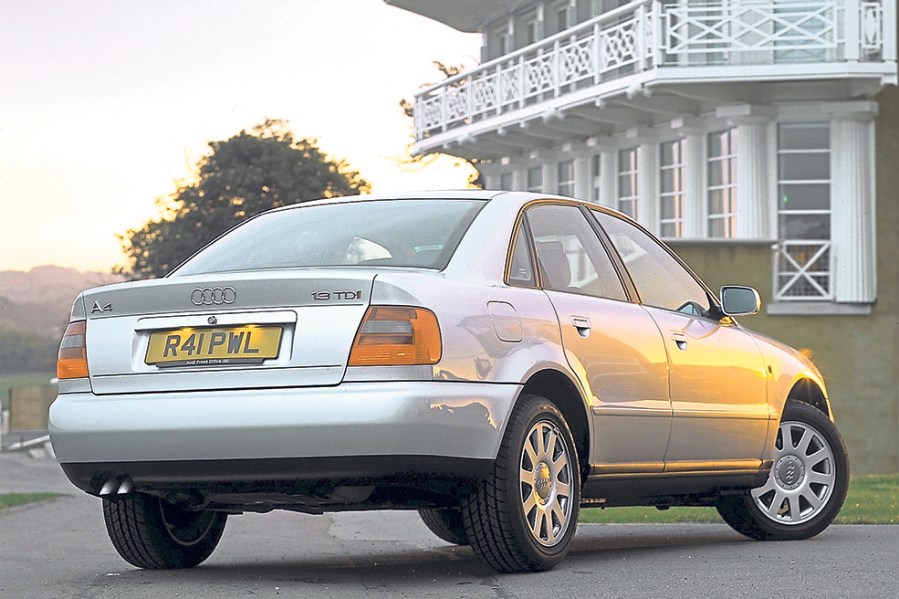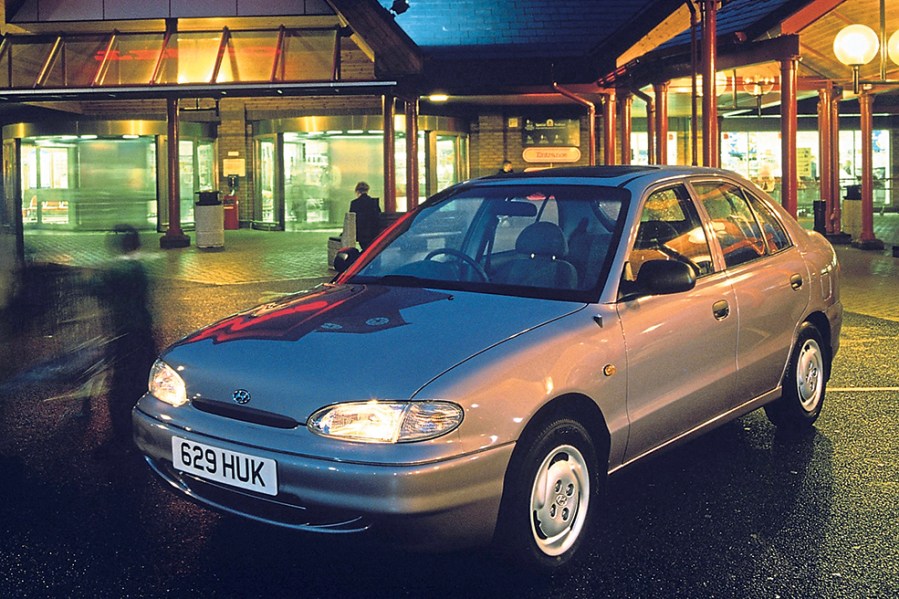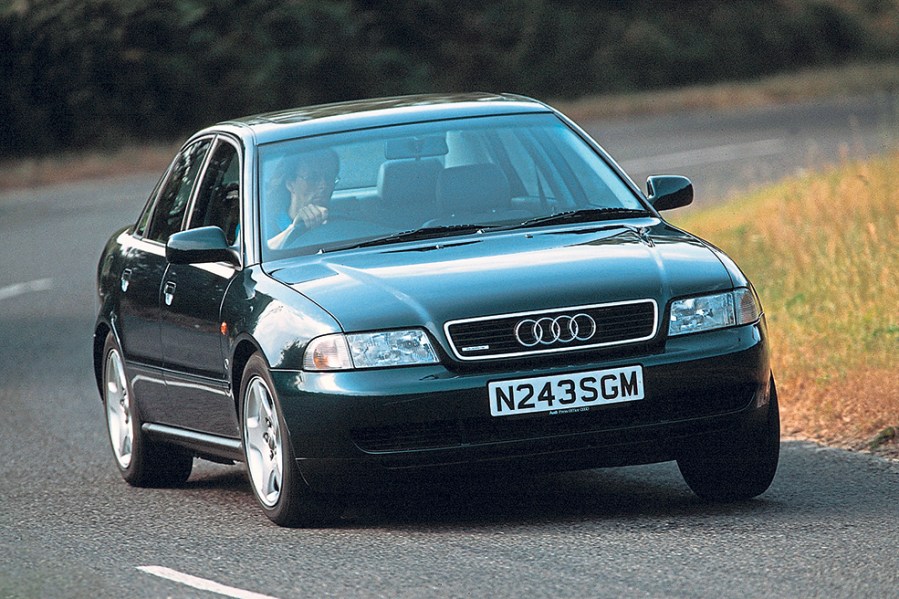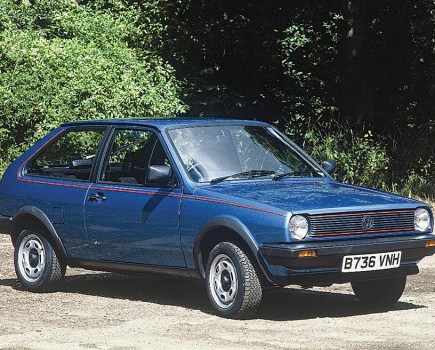A year for new models and successful evolutions alike, 1994 saw some great classics hit the market. Here are our favourites
Words: Joe Miller
It was an important year in world history: 1994 saw the end of Apartheid in South Africa with Nelson Mandela’s election and – with the founding of Amazon by Jeff Bezos – the dawn of the modern internet as we know it. At home, the Channel Tunnel was opened, Rover was sold to BMW, the first National Lottery draw was held – and Harry Styles was born.
Meanwhile, the car world was producing its own landmark moments. Some manufacturers introduced all-new models that would go on to become cornerstones of their lineups, while others continued the steady evolution of existing tried-and-tested nameplates. The meteoric rise of South Korean brands in the UK began in earnest, while the SUV boom hadn’t quite found its feet and saloons and coupes remained popular options.
Here are our picks for the stand-out stars of 1994 – from compact executive contenders to cheap and cheerful runabouts.
Audi A4 B5 (1994-2001)
The Audi 80 had helped Ingolstadt break into the compact executive market, previously dominated by the BMW 3 Series and the Mercedes 190E. The 80 sold respectably well and helped showcase the advantages of diesel in the sector, but with the sharp new BMW E36 and Mercedes C-Class to contend with, the 80 was in dire need of replacement. Many of the principles were carried over to the new A4, including the longitudinal front-driven layout. The new model used the B5 platform, which would go on to underpin the 1996 Volkswagen Passat, and there were strikingly low equipment levels on base models for an attractive base price. The Imre Hasanić design was clearly evolutionary rather than revolutionary, but sharpened up the lines of its 80 predecessor and arguably peaked in the crisply-penned Avant estate version.
Noting that choice was the key to success in this sector, the A4 was offered with a range of petrol and diesel engines, including the all-new motorsport-derived 1.8-litre 20-valve turbo unit, or ‘1.8T’. A durable, torquey power plant with 148bhp in base spec, it was later offered with close to 200bhp and to this day is a darling of the VW tuning scene. Audi’s trademark quattro all-wheel drive was also offered, to give it a poor weather advantage over its rear-driven rivals. The A4 was lauded by the press for its immaculate fit and finish, particularly in the face of the comparatively poorly built Mercedes C-Class, while the 2.7-litre twin-turbo S4 proved a capable BMW M3 rival.
The A4 was the start of Audi’s modern era, where it truly challenged BMW and Mercedes – later came the A6 which stole a chunk of the 5 Series’ market share, and the trailblazing all-alloy A8 proved a competent enough luxury car to stand toe-to-toe with the S-Class. The A4 arguably started it all, though, and today you can get into one from just £1000.

BMW 7 Series (E38) (1994-2001)
Long in the shadow of the Mercedes S-Class, BMW was determined that the E38 generation of its 7 Series would put Stuttgart in its place. The sharp Boyke Boyer design concept evolved into a production car and instantly made an impression, looking sharper and more modern than the W140 S-Class and far more purposeful than the slightly plain Lexus LS400.
The punch continued beneath the skin, with BMW’s immaculate quality complimented by cabin that could be specified with leather, double-glazing and a television. The E38 could also boast the first curtain airbags on a production car, as well as the first satellite-navigation system seen on a European car. Yet it still drove like a BMW, with near-perfect weight distribution, satisfyingly weighty steering and superb balance – this was a limo you could throw around like an MX-5.
If the V8 Mercedes driver thought they’d get away on the straights, the E38 offered a 5.4-litre, 322BHP V12 to keep the S-Class honest. Almighty performance combined with flawless refinement created something of a private jet experience on the road, finally smacking Mercedes – and new boy Lexus – down. Combine all that with a plethora of frugal and fire breathing engines, numerous wheelbases (even armoured versions), and a constant raft of updates and new tech offered by BMW, and it’s easy to see why they sold 340,000 E38s.
Today, the E38 7 Series is heralded as a BMW high-water mark and a guaranteed future classic, with values rising steadily in recent years. The days of a £1000 728i smoker are long gone; a decent six-cylinder car will now cost you around £3000 and V8s push £6000 in good condition, but the 750i V12 is the sought-after one – few come to market and when they do, budget close to £20,000. That sounds expensive, but for one of the best BMWs ever made, and possibly one of the best luxury cars full stop, it looks like a bargain.
Jaguar XJ X300 (1994-1997)
Replacing the Series XJ had been a long-term project for Jaguar, with development starting as early as 1972, before eventually being released in 1986. The XJ40’s divisive styling, off-putting technology and poor quality masked what was otherwise a superb car, but when Ford acquired Jaguar, it knew the XJ40’s reputation was beyond saving. The plan was to take all the good bits, sort out the quality issues, wrap it in a less divisive body and start again. The culmination of that plan, the X300 XJ, was launched in 1994 and it was clear that the £200 million investment in facility renewal by Ford had been worth every penny.
Geoff Lawson penned what was coined the ‘New Series XJ’ in marketing – the classic Jaguar four-light front and fluted bonnet returned, and with softer edges and tapered rear lights also reinstated, the X300 looked firmly towards the past. The inside too was refined, with more curvaceous seats, a slimmer steering wheel and new trim options. The controversial digital gauges from the XJ40 were gone too, which once again served to make the X300 look like a new incarnation of a classic Jaguar. Quality was key after the slightly shambolic XJ40, and the X300 delivered – the fit and finish was far ahead of anything Jaguar had made before, with tight shut lines, sturdy trim and an absence of rattles.
Without the quality issues to worry about, buyers could appreciate the X300’s fantastic blend of ride comfort and nimble handling in the trademark Jaguar fashion, whereas power came courtesy of the stalwart V12 and straight-six engines, the latter now in AJ16 guise. The supercharged XJR gave the BMW M5 something to worry about, while the plush Daimler Double-Six was a limo to challenge Rolls-Royce. The X300 truly set Jaguar back on track, and despite its short three-year life, many cite it as peak XJ. Around £3000 buys you a decent example, but prices are on the up and you’ll need to at least double that budget for an XJR.
Range Rover P38A (1994-2001)
The Range Rover arguably single-handedly created the luxury 4×4 sector that today dominates, but despite its commercial success, Land Rover – then owned by British Aerospace – didn’t have the large budget that replacing it was thought to demand. For styling, Bertone and Pininfarina were approached, but an in-house Land Rover design was chosen for what became codenamed the P38A. Drawing heavily on recogniseable traits from the Classic, the new car may have sported a smoother front end and some rounded edges, but the silhouette was unquestionably a Range Rover. The bodyshell itself was stiffer and featured more crash protection, improving safety as well as reducing noise and vibration at speed.
The badly dated interior of the Classic was replaced by a more curvaceous, flowing cabin, borrowing heavily from Rover for switchgear but clothed in plentiful wood and leather for an upmarket feel. Mechanically, the P38A had plenty to showcase, with a BMW turbodiesel engine joining 4.0 and 4.6-litre variants of the stalwart Rover V8, moving the car via air suspension that was height adjustable and self-levelling. The off-roading ability remained as mighty as ever, but now the comfort and high-speed stability on road was far more on a level with luxury car rivals. The P38A took everything to love about the Classic and modernised it, improving its on-road manners to create the perfect blend.
Of course, the reputation for unreliability precedes it, with P38s suffering from suspension, electrical and gearbox issues, but with the second-generation car now acquiring classic status, few ropey examples remain and those that do serve as ideal parts donors for the enthusiast-maintained investments you’ll more commonly find these days. With Classic values skyrocketing and the L322 successor typically even worse for issues, a P38A from around £4000 looks like a good value entry to Range Rover ownership.
Hyundai Accent (1994-1999)
Similar to how the Japanese took over the British car market in the 1970s with well-equipped, reliable cars, South Korea started encroaching on the UK come the 1990s. The Hyundai Accent never professed to be luxurious or sporting, but the appeal extended to thrifty buyers, perhaps looking to replace an ageing runabout with something brand new. Priced from just £8000 when new, the Accent sported neat styling, numerous body options and decent equipment levels for its price.
Unlike Malaysian firm Proton, or various manufacturers producing cast-off Fiats, the Accent was Hyundai’s own car, with its own engines and a unique and well-equipped, if slightly bland, interior. Thanks to typically Korean robotic construction, the Accent also sported far superior quality than Yugos and Ladas typically found at the entry price point in previous years, and it gradually acquired a reputation for worthy, practical, reliable transport for those not too concerned with style. Being an Escort-sized car at a Fiesta-sized price meant Hyundai could also tout value for money. Piling high and selling low may have contributed to the Accent’s success, but an undeniably well-rounded package, particularly for the money, helped Hyundai avoid the undesirable dowdy reputation of the older Eastern-Bloc efforts.
The Accent was also built under license globally, extending the brand’s reach and market share – Turkey, China, Egypt, Venezuela and even Botswana hosted factories building Accents, where low-cost motoring was paramount. As a result of the numerous factories and badges assigned to the Accent, it’s hard to say for certain how many were built, but it helped Hyundai gain a foothold into the car market globally, a success story that gradually grew to the point of today’s Ioniq5 being one of the most high-tech, revered EVs on the market. Thanks to the use-and-abuse nature of such a car, few first-generation Accents exist today, making it an unusual and affordable modern classic choice so long as you can find one.

Ford Probe (1994-1997)
Ford’s European operations didn’t really enjoy the best of starts to the 1990s, beginning with the roundly slated Mk5 Escort and no answer to a raft of new coupes from rival manufacturers such as the Vauxhall Calibra and Volkswagen Corrado. With the Capri long since departed, Blue Oval fans in search of a fastback needed to look elsewhere – and the manufacturer itself looked across the Atlantic.
Its response was to bring the Probe to Europe, but it took a while. Built at Flat Rock, Michigan, the first-generation model had been launched in 1988 in the US, and had initially been developed as a modern replacement for the Mustang. However, word getting out about its Mazda Platform and front-wheel drive led to a public outcry, so the Mustang’s ageing Fox platform ended up being revamped and the smaller Ford was sold as the Probe instead. Perhaps surprisingly, it ended up a sales success, prompting Ford to partner with Mazda again to create a second-generation model.
The sleeker new Probe was produced in readiness for the 1993 model year, but having missed out on the first-generation car altogether, UK buyers had to wait until the spring of 1994. Sharing the front-wheel drive Mazda G platform used by the Mazda 626 and MX-6 but using Ford’s own bodywork and interior, the Probe’s futuristic swooping lines, “floating” roof thanks to black-out pillars and pop-up headlights instantly grabbed attention. In Europe in particular, some lamented the loss of rear-wheel drive, but smooth Mazda four-cylinder and V6 engines, a comfortable ride, a spacious interior and decent equipment amounted to a very competent car.
Sadly, it failed to capture the public imagination in the UK, partly because of its transatlantic styling, and partly because of an unfortunate name. Competing in a saturated market didn’t help either; Ford hoped to sell 20,000 a year, but only managed around a quarter of that before the model reached its end in 1997.
However, Probe owners are amongst the most passionate, good-natured car enthusiasts we’ve met, with a welcoming community and all the help with parts you could need. Roadworthy examples can be had from under £2000, whereas the values of mint V6 cars can now push five figures.





